That is my green bean harvest.
It’s a normal year for green beans here.
You see, green beans are like tomatoes–and zucchini, squash, pumpkins, peppers and cucumbers.
When it’s above 90º, they don’t like to set fruit. They don’t even flower much. They just try to stay alive.
We have over 5 months of above 90º temperatures. Summers are around 116º, cooling to 104-113º at night.
This means that I struggle to get any of those items to grow in my garden. This year I’ve harvested 1 yellow squash, 1 zucchini (that was so hard we had to peel it and it was still almost impossible to eat), 14 cucumbers, 2 handfuls of green beans, and no squash, pumpkins, or peppers, though I planted them.
Heat stops production. We get 2″ of rain a year here. The ground is so hard that you have to jackhammer holes to plant trees. In fact, I had to soak the ground for 4 days before it was soft enough to be moved with a backhoe. The backhoe could not dig it before that. We replaced dirt 2 feet down in our garden, but the old dirt has a way of working itself back up, rocks and all. The dirt has a ph between 8-9, so it is very alkaline. The water is full of salts; it leaves salt deposits on the top of the dirt.
Did I mention that it’s hot?
In fact it was 107º in the shade yesterday.
Given these temperatures, I do not grow most of my family’s food. I would love to! And if I lived in a more mild climate, I could grow a lot more in the same space–a whole lot more, in fact.
But with 20 tomato plants, there are still not enough plants to can tomatoes–or even enough plants for us to get our fill of fresh tomatoes.
I struggle to grow zucchini. I have 3 plants still alive (others have died, thanks to bugs), and they rarely flower, becuase it’s too hot. There is one flower on one of the plants right now, and it’s a male flower. This means no zucchini for me! On a good year I get 5 zucchini. From 5 plants.
I don’t give up. I keep trying, working with different planting schedules, hoping my plants survive the heat long enough to produce again in the fall. I plant Swiss chard, because it is awesome and it grows here. Rosemary and green onions do well here too. For everything else, well, I have to wait until it cools down.
Garden Harvest:
September is when I mainly harvest herbs, squash, and cucumbers. Our butternut squash didn’t produce this year, and the zucchini have left me empty-handed. I’m hopeful to get something when it cools down and my plants decide to make some female flowers again. In the meantime, we’re enjoying the herbs and the 14 cucumbers. I’m also picking grape leaves for making stuffed grape leaves.
Garden Chores for September:
Fertilize fruit trees. This fall fertilizing will help ensure that you have fruit next year. I use this mix for fertilizing my trees in fall:
3 cups Cottonseed meal (this is your nitrogen; it makes branches and leaves)
1 cup Soil Sulfur (to lower ph; we have a super high ph here of 8-9!)
1 cup bone meal (this helps the roots in winter and also helps fruit production in spring)
1/2 cup iron
1/3 cup Epsom Salt (this provids magnesium to the tree)
I mix together the ingredients in a bucket and scratch the following amounts into the soil around the tree:
For Trees planted one full year: 1/2 cup per tree.
For Trees planted two years: 1 cup per tree.
For Trees planted 3 years or more: 1/2 cup for each inch of trunk diameter per tree.
I use a smaller amount for fertilizing fruit bushes and grape vines. I don’t measure it; I just sprinkle a small amount under them and scratch it in.
Fertilize grass If you want green grass in fall and winter, fertilize it again a few times before it freezes.
Reseed grass. We’ll be reseeding this month when it cools down at the end of the month.
Weed. I’ve been indoors most of the summer. The weeds have grown out of control while I’ve been avoiding the heat and have been sewing. I’ll be doing lots of weeding soon, in between sewing birthday gifts and clothes.
Fertilize and prune roses. It’s been too hot for the roses to flower. They’ve gotten tall. I’ll cut them back for a fall flowering. I look forward to having flowers in the garden again.
Plant a fall garden.
In most Northern hemisphere climates, you can direct-sow Swiss chard (silverbeet) from seed now. Swiss chard grows to 15º F (approx. 10ºC) so you can harvest it for a long time. It can often survive below a heavy snow layer for much colder temperatures than that (a friend of mine has found it that way below her heavy lake-effect snow in upstate New York).
A fall garden is often overlooked. It’s a chance to plant some cool weather vegetables again. In warmer climates like mine, it’s the best time to get started with cool weather crops. Here is my garden calender for the year. Make sure to check out what I’ll be planting over the next several months.
I usually add sterile, bagged manure to my fall garden before planting. You can also add new soil to your garden, as well as fertilizer.
Some of you are probably thinking, that’s great, Brandy, but I live in a zone 4. It snows in the winter and the ground actually freezes here. I can’t garden in the winter.
I know you’re thinking that because so many of you have said it! “Oh, if I lived where I could grow produce year-round, then it would be different.”
Guess what? You already do.
And in fact, you are at an advantage to me, because you live in a cooler climate. You are able to grow multitudes of berries that only grow in zones 7 and below (it’s too hot here for raspberries, gooseberries, currents, etc.) You can grow enough tomatoes to can, and to dry. You can grow so much zucchini that you sneakily give it away.
Ladies, my garden harvest is small, because the heat stops production.
If you live where it’s cold, you have a great advantage, and you can grow so much more than I can.
Have you ever heard of Elliott Coleman? He’s the man from Maine who wrote the book Four-Season Harvest: Organic Vegetables from Your Home Garden All Year Long. He harvests fresh Brussels Sprouts for his Christmas dinner from his garden–in Maine. More recently he wrote The Winter Harvest Handbook: Year Round Vegetable Production Using Deep Organic Techniques and Unheated Greenhouses
.
If you don’t know how to grow cool season crops in the winter, you’ll need a little equipment. Cold frames, hoophouse and greenhouses are your friend. A raised bed will avoid the ground freezing problem. You can harvest your own lettuce, Swiss chard, radishes, turnips, parsnips, green onions, leeks, and more, all winter long.
Since I’ve always lived in the desert, though, don’t take my word for it. Take Yolanda’s word for it. She lives in a zone 5 in Indiana, and her garden in February was bigger than mine.
Here was my rasied bed in February:
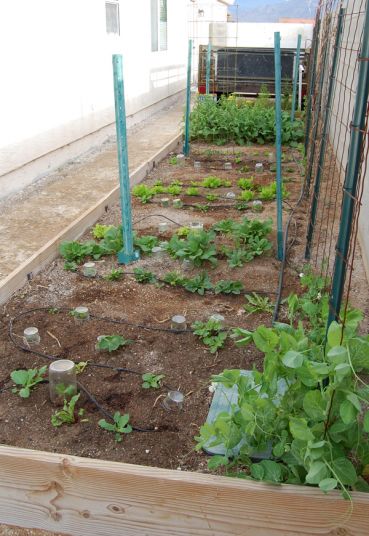 |
| The dark and light spots in the dirt are caused by the salts in the water here. |
(You can click on her photos to make them bigger.) Make sure to check out that November garden and March garden photo too.
Do you see that she has more in about the same amount of space? Not only that, but she doesn’t have to water it in the winter.
Yolanda’s garden is awesome. She gets much more than I do, even though she lives in a colder climate. Yolanda’s pretty awesome, too. She is the mother of 6 grown children, whom she also homeschooled. One of those is her lovely daughter April. I’ve met all of her daughters, but April’s my favorite 🙂 April and I are different in fashion choices, family size, education choices, and more–but we are still friends. I know some of you who read this blog are a lot more like April than like me. I love that we can still be friends and learn from one another! April actually introduced me to her mom because her mom and I have a lot in common. Besides gardening, cooking and homeschooling, Yolanda also sews. She blogs at Simply Homemaking.
I will be waiting to plant my fall garden until the end of September, when it’s cool enough for seeds to germinate. If you live somewhere cooler, you can plant yours now.
And if you live somewhere cooler, you can grow a lot more food that I can. In the same amount of space or smaller, in fact.
Try it!

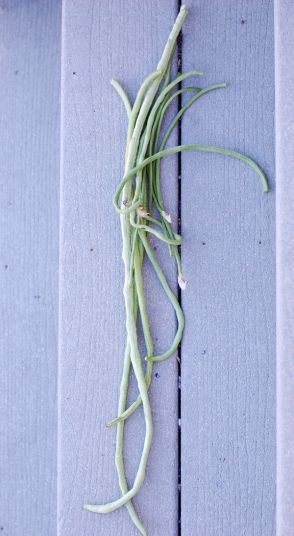

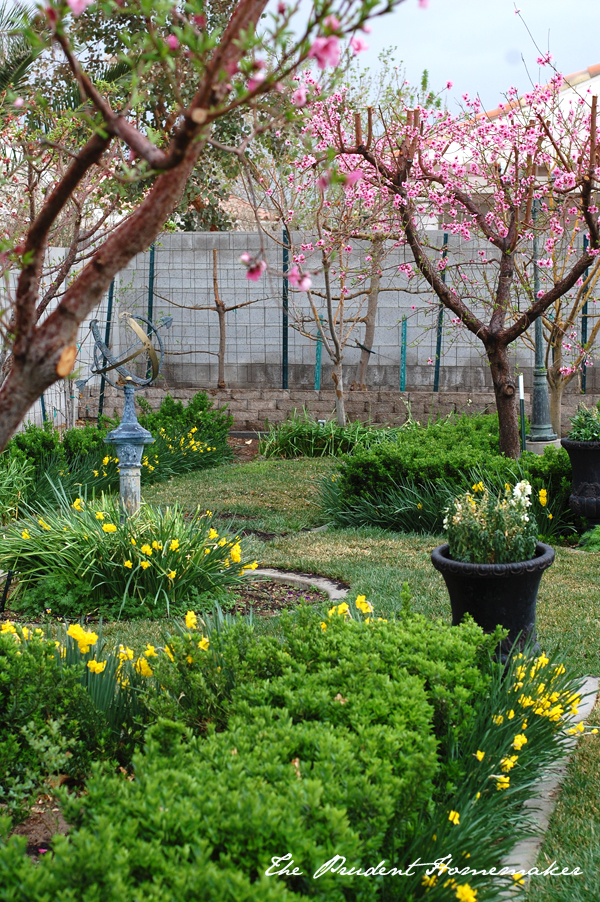
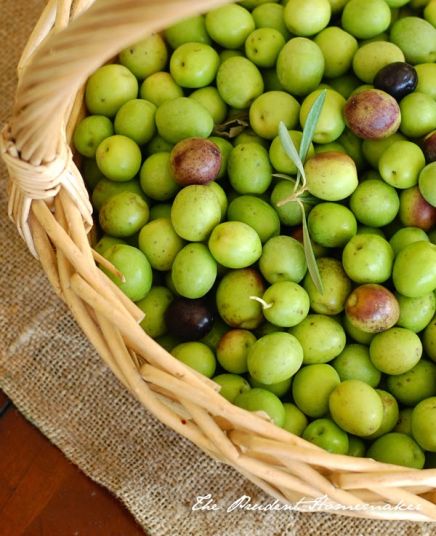
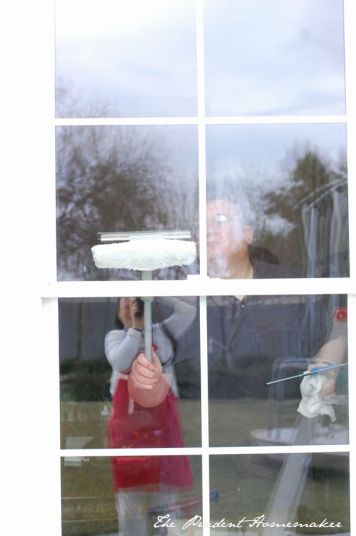
It certainly is a struggle for you there! I hope that the “good” times increase. As for bugs, it’s really important to move crops around from year to year, if at all possible. Maybe someday you and your family will live in a more moderate climate. I know one time I visited the “Old Mormon Fort” there and there is a stream that flows close by. They have a wonderful garden, and I can’t help but think the kind of water and easy availability of it must help a lot. Thank you for the “shout out” about my blog. I’ve had a little very nice feedback from that. 🙂
I am going to plant some things differently this fall to help rotate crops.I hope to move to Washington someday–where the soil is acidic–and it rains!There is that little stream downtown, which is why they built the fort there. If you take the tour at the fort they tell you that they really had to change around their planting schedule to grow food here. The dirt is different in that part of town–no caliche that must by dynamited if you want a basement! (Which is why very, very few people have basements here).You have to drill thousands of feet here for a well, and if you spent all that money and dug a well, the water district now says that you can no longer use your well, but must pay the city for water, as they have decided that they own it all.
I notice that every year I garden I learn something new. We had such a mild winter in northern Utah that I had a few things just pop back up. This year has been interesting. I have had great success with Green Beans, tomatoes, patty pans, zucchini, yellow squash, chard, radishes, strawberries, turnips, herbs, cukes, and eggplants, but zero luck with jalepeno peppers. I grow Hungarian Wax Peppers, Anaheim’s, Green Bell Peppers, Pablanos, Habeneros and Jalepenos. I think I’ve only had 6 Jalepeno peppers grow. I’ve planted my fall garden with lettuce, arugula, turnips, beets, kohl rabi, radishes, english peas, and mustard greens. Everything is about 5 inches tall now. I am looking forward to harvesting my Jerusalem artichokes, that is a first for me. Oh, and I did get a beautiful voluntary Mammoth sunflower that popped up. My kids are patiently waiting to pick the head and make some edible seeds!My green grapes never do very well, they ripen before I notice so the birds get them so I usually pick concord grapes from my mothers neighbor. My kids love when I make juice using whole grapes rather than steam juicing. The fun part is I’m already planning for next year, I’m hoping to add a dwarf variety of apricot, peach and apple tree to my back yard.
My okra (I planted 3 small plants from the nursery I bought 1/2 price in May) has done really well in the heat here in Columbia, SC. The plants are taller than me (5’7″) and produce several pods per day. I have been slicing and freezing them to fry later. I am the only one that likes it boiled or steamed (it is slimy that way) but the whole family likes it fried (not slimy). It IS an acquired taste, though. I just grew up Southern, eating okra!Allison
The recorded high temp for Las Vegas is 117 F. It happened once in the 30s and again in 2005. If your area of the Valley regularly has temps above 120 F, you should call the National Weather Service so you can get in the record books! That’s similar to the daily temp in Death Valley.
Your lot sounds similar to mine. It would cost $10,000 or more to have the pines safely removed (they are huge and close to the house/septic system), so I work with what we have. I could never grow enough food to justify the expense of removing the trees!Oregano, onions, peas, bush beans and cherry tomatoes do well for me. Last year, I was overrun with peppers, but this year, they haven’t done much. Marigolds and hosta do well, too!
Quimby had an excellent suggestion and it made me think of pine nuts. Also, I just remembered the watercress grows wild in streams out at Red Rock. I’m sure the Native Americans and early settlers ate that.But, unfortunately, no, I didn’t get the chance to harvest pine nuts myself, but you don’t have to put them in the oven. Just set them in the sun on cookie sheets. I mentioned it because it is a local food that Native Americans would have eaten (and probably eaten a lot of!). Yucca blossoms/fruit are edible, but protected, so you can’t harvest those unless you grow your own.There are plenty of game species that can be hunted in Nevada, including mule deer and antelope. Bighorn sheep can be hunted in some areas, plus there are a bunch of game birds and rabbits. You have to get away from the city though, and that is expensive.
Yeah, Andrea, I don’t get that. Our first year here the weatherman reported that it was 126º that day in mid-September. When we first moved here, we lived in another part of town, and I noticed on the weather reports that the north end of town was always 5-6º warmer than where I lived. Now I live at that north end of town.Weather.com must be measuring downtown, because I’ve read them to tell me what the temperature is, and they’re not right. They’ll say in Decmeber it’s only going to be 32º, and that night it gets down to 22º, and my citrus trees froze (3 days in a row it was 22º). I have an electronic thermostat, plus my mom has one next door as well as a regular dial-kind. We also have a thermostat on our car, so it’s pretty easy for me to see the temperature. My mom even took a thermostat in her car once to see how hot it got in her car during the day (145º!)I remember one night when I was coming out of Sam’s Club. I was just getting into my car at 8 pm. There was a family in the next car getting out of their car to go into the store. The little girl was about 3 years old. She said, “Daddy, it’s hot,” to which he replied, “It’s not hot out.” I got in my car and checked the outside temperature: 113º at 8 pm.I’ve seen the thermostat at my mom’s house read 123º (in the shade) almost every summer but this one. This year had a milder winter, but we also had a cooler summer and a day of record rain recently. Usually when it rains here it rains further south; we see the clouds and smell the rain and get nothing, or just a 2-second splash that you wouldn’t see unles you were looking for it. This time we got rain.The water district has been adament that it would be impossible to raise the level of water in Lake Mead by an inch in a year, which is why they took over the wells (water levels dropping). Last year we had a valley-wide day of prayer by churches all over the valley. The rain came and the snow fell in the mountains, and we saw the water level in Lake Mead rise by several inches in one year.
There is a lottery to get a deer tag, which is around $300–and of course no guarantee that you’ll actually get one. Plus you have to drive quite a ways. There are rabbits in town; thankfully we’ve one had only one here. The next tract over has lots of them in the yards. They (and the bakyard chickens) attract the coyotes as well just a few streets over. (It’s so ironic that right outside my tract people are zoned for chickens and horses and that I can hear roosters from my bathroom window, but I can’t have chickens here).Red Rock is very different from the north end of the valley. It’s quite a drive from here. The west side of town will sometimes get snow while we see nothing. I have family on the west side that calls me when they get snow to see if it’s snowing here (not usually!)
A question on your homemade laundry detergent–does the washing soda and borax store alright in their original boxes or do you transfer them to something else?I’ve enjoyed your website in the past and am so glad you are doing a blog now. Thanks.
I wish we lived where we could have a hoop house. I grew up gardening and canning with my mom, and it’s so much easier in a non-desert climate where it rains. I miss that.
Vegetable gardens are pretty rare in Florida because the bugs eat EVERYTHING! My Mom had a huge wonderful garden when we lived in Iowa. We moved to Florida when I was 9 and she had a garden one year and said she would never bother to plant another one. Also the soil is just sand so it has no nutrients to speak of and the water percolates too fast for anything to stay hydrated. Unless you live way down south near Miami it is too cold in the winter for vegetables.
The more I read about the effect of intense heat on plants, the better I feel about my failures this year. I planted beans (bush and pole) right before the huge heat wave that hit the midwest in July. The literally fried in the sun, and I thought it was my fault, until I started seeing pictures of corn fields doing the same thing.
Thank you so much for this post. I was feeling like a huge gardening failure this year, but now that I see others have had both failures as well as successes, it has reminded me of what did work out and what to be thankful for. This is my first year gardening in Zone 5, and my goodness, what a summer to start! Thankfully, 1/2 of my tomatoes did alright, the chard did excellent (and I will leave it there until it gives up!), I got 15 zucchini off of one plant, and the sage, parsley, oregano and thyme are really doing well now. What didn’t do so well were my beans and beets and the squash. I thought I had done something wrong, and maybe I did, but now I realize how much heat has to do with it. Your thoughts on planting a cool season garden have given me motivation to get back out there, dig and weed again, and try some things for the fall.
i would like to suggest two websites to you. one is http://www.backtoedenfilm.com/ which suggests a certain type of mulch that decreases the need to water basically at all. the other is http://sustainablymodern.blogspot.com/ which is a gardening blog of a texan. i think you could get a lot of good ideas from her of what & when to plant as her dead season is the heat of summer as well.
Melinda I had wondered the same thing. I was even thinking a rolling garden so that it could get direct sun but could be moved inside at times too. I was thinking lettuce, a tomato plant or zucchini plant could be possible.
Brandy, you could always move over to Utah! Along the Wasatch Front, we get rain on a regular basis as the clouds hit the mountains, & real estate is finally picking up here again.- Marivene
If we lived closer, I would give you zucchini and cucumbers-I only planted one of each plant and they have each been quite bountiful! My husband and I are researching building a small green house- we live outside of Seattle- we are confident we can get some vegetables (lettuce) year round. My husband is in the National Guard, and most of the hardware stores will give us a military discount ( 10% off); once we figure out the design/style; we will begin the construction.
I live in the Vegas Valley also(Henderson) and recently found your blog. It is really difficult to have a garden here. Tomatoes are hit and miss depending on our spring and early summer as you know. My tomatoes are usually done and pretty much dead by late June. If we get good consistent warm weather in Spring I get a pretty good crop. However, our springs are usually so up and down temperature wise, going from cold to hot within days, that it is hard for the fruit to set. The tomatoes did pretty bad this year.I have been growing long beans and had pretty good success. Last year I planted them in the spring and they finally started producing in the fall. They produced until they froze. When I say they produced I mean more than if I grew regular pole beans or bush beans. The great thing about the long beans is that they are long and one bean is like 2-3 regular beans. I am guessing the beans in the picture are long beans. Hopefully your plants will make it until fall so they will give you more beans. This year I planted the beans in late June or July and had a pretty good harvest in August which surprised me. They are still alive and I am hoping for another harvest. Unfortunately they have aphids and the ants that take care of the aphids make it hard to harvest the beans. UGH!I grew Armenian cucumbers last year and they went crazy in the garden. I had cucumbers setting in July and August. The only problem is that my family didn’t like them nor did the neighbors. They taste like a cucumber but have a different texture. They seem to be more solid with less water content. Not sure if you have tried them but if you want cucumbers in July give them a try. They seemed to set better in the hotter weather. They also taste better if you pick them when they are fairly small. You really have to keep an eye on them because they get big really fast.About shade. My friend has raised beds and built shade structures for them this year.(she also lives in henderson) Some of her tomatoes have continued producing. Amazingly she still has Glaciers putting on tomatoes as well as Abu Rawen(loved this little tomato) The Abu Rawen did very well here for both of us. I don’t have shade and mine quit a while ago but the plants stayed relatively healthy.Hoping next year is a better gardening year here!
Forgot to mention that the shade for the tomatoes was placed when it got hot, not in the spring. They were given full sun early on.Good luck with your garden, hope all grows well for you this fall.
Peggi,Go a few posts back to see pictures of my Armenian cucumbers.Mine are very much full of water, and I’ve had no problems with bitterness, even on the ones that were 22″ long. They are sweeter–almost like melons.There are lots of little sub-climates throughout the valley, and the shade/lack of shade and dirt in each yard make for some very different results throughout the valley. I’m at the north end of the valley and it’s about 5º hotter here than Henderson if you watch the weather reports.I will be having a garden tour in October, if you want to make the drive up here. It’s about 45 minutes.
check out this guys youtube channel he grows alot in vegas. this video is a trip he took to leslie doyle home. accourding to him she grows about 600lbs. of food a day in peak season in Las Vegashttp://www.youtube.com/watch?v=R1gHbsv7DrQ&list=UUUnFheTbVpASikm0YPb8pSw&index=11&feature=plcp
I’ve been to her house 3 times. She does really well with tomatoes here; she’s called The Tomato Lady in town. She grows some different varieties. I’ve tried growing her kind (I bought them from her) and they died on me/didn’t produce fruit. She also has some fantastic soil ($5 for a 5 gallon bucket) which I’m sure helps her plants a lot. She sells a pamphlet ($10) that tells her secrets to growing tomatoes here in town; it’s a very expensive book for a couple of pages. She swears by her varities. I know others who have tried hers as well and have had the same luck as I did–they got nothing from them.She has a huge lot in an older part of town; she’s been there something like 40 years. I get her email newsletter; she’s planting beans now.You can see a photo of her harvest here: http://www.flickr.com/photos/thingsthatgrowthatwecaneat/7489280272/in/set-72157630173686830Very few in town get as many tomatoes as she does. She has some great soil. It’s costly, but it helps a lot.
We tried her methods and seeds last year. The seeds germinated and the plants grew but the few tomatoes that we got from the plants were not the varieties they claimed to be. Very disappointed, won’t do that again.
How do I find out exactly when the tour is? Would love to come. Our Armenian grew well and were sweet but just not my favorite. The neighbors didn’t care for them either. It was amazing watching them grow like crazy though. Not much does that here.I know that my garden and my friends garden(both in Henderson) are very different in what grows well. Things that grow well for her don’t grow well for me and what grows for me doesn’t grow for her. Crazy. Love your blog by the way.